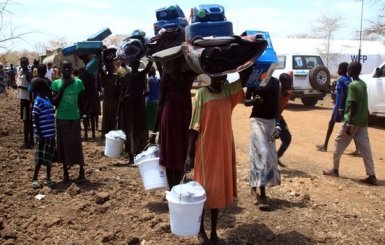UNHCR records rising flows of S. Sudanese refugees into Ethiopia
By Tesfa-Alem Tekle
October 23, 2016 (ADDIS ABABA) – The United Nations Refugees agency (UNHCR) on Saturday said thousands of refugees have crossed into neighboring Ethiopia.

Among the new arrivals, the world body said, are women and children.
Renewed fighting in parts of the young nation is blamed for the increased flow of refugees in to Ethiopia.
According to the report, a copy of which Sudan Tribune obtained on Sunday, the new arrivals, mostly originating from the Upper Nile State (80%) and Jonglie State (17%), reported to have fled from insecurity and food shortage at home.
The arrivals citied fear over the renewed fighting in areas in the Upper Nile State (Nasir, Maban, Mathiang and Maiwut) as well as food insecurity coupled with fright over the spread of the conflict to the Jonglei State (Ayod, Akobo, Fangak and Uru).
UNHCR field officials said 29,963 of the total new arrivals (42,684) have been registered.
The new arrivals include large numbers of unaccompanied children.
“65% of the total registered new arrivals are children, including 6,921 unaccompanied and separated children,” UNHCR said.
Meanwhile, UNHCR said it has opened a new refugee camp to shelter more South Sudan refugees flocking to Ethiopia.
The newly established Nguenyyiel refugee camp was opened with the relocation of 986 refugees in 363 families from Pagak on 20 October 2016, including 299 unaccompanied and separated children, as well as those with other vulnerabilities.
The refugees are accommodated in communal hangars, pending the construction of emergency family shelters to which they will be transferred.
The new arrivals are receiving services, including the provision of water and sanitation facilities which meet the required standards.
According to UNHCR officials, averages of at least 900 South Sudanese asylum-seekers arrive at Pagak Transit Centre in Ethiopia’s Gambela region on a daily basis.
(ST)
